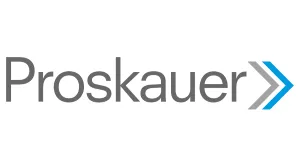- within Energy and Natural Resources topic(s)
- with readers working within the Banking & Credit industries
Recently signed tax legislation includes several beneficial changes to Achieving a Better Life Experience (ABLE) accounts, a potentially useful and tax-efficient savings tool available through state-run programs for individuals with disabilities. We previously posted an overview of ABLE accounts. Below is a summary of four beneficial changes to ABLE accounts, which will become effective for the 2026 tax year:
- Contribution Limit Inflation Adjustments: Each year an amount up to the annual per-donee gift tax exclusion may be contributed to an ABLE account, which is adjusted annually for inflation. The 2025 limit is $19,000. As a general rule, the gift tax exclusion is adjusted for inflation beginning in 1997 when the limit was $10,000, but for ABLE accounts the inflation adjustment uses a reference date of 1996, so the annual contribution limit is higher than what it would otherwise be under present law.
- Higher Contribution Limit: Employed individuals who do not have contributions made to certain qualified retirement plans may contribute an additional amount to their ABLE accounts up to the lesser of the individual's compensation for the tax year or the poverty line for a one-person household determined for the calendar year before the contribution year. The 2024 poverty line is $15,060 for residents of the 48 contiguous states and the District of Columbia, $18,810 for Alaska, and $17,310 for Hawaii. This provision was set to expire on December 31, 2025, but has now been made permanent with no sunset.
- Saver's Credit: An ABLE account holder may be eligible for a nonrefundable tax credit known as the Saver's Credit for contributions made to an ABLE account from the 2018 tax year through the 2025 tax year. Credit eligibility has been made permanent for 2026 and future tax years with no sunset. The credit was up to 50 percent of the first $2,000 contributed—that is, up to a $1,000 tax credit—depending on an individual's filing status and adjusted gross income during the applicable tax year. For 2026 and future tax years, the credit will increase to up to 50 percent of the first $2,100 contributed, for a maximum tax credit of $1050.
- Rollovers from Qualified Tuition Programs: A temporary provision allowing nontaxable rollovers from qualified tuition programs to ABLE accounts has been made permanent with no sunset. To qualify, (i) the rollover must be completed within 60 days, (ii) the ABLE account beneficiary must be either the qualified tuition program beneficiary or a member of the ABLE account beneficiary's family, and (iii) the rolled-over amount must not exceed the inflation-adjusted annual per-donee gift tax exclusion noted above when added to all other contributions to the ABLE account in the taxable year.
Beneficial Changes To Tax-Advantaged ABLE Accounts For Individuals With Disabilities
The content of this article is intended to provide a general guide to the subject matter. Specialist advice should be sought about your specific circumstances.


